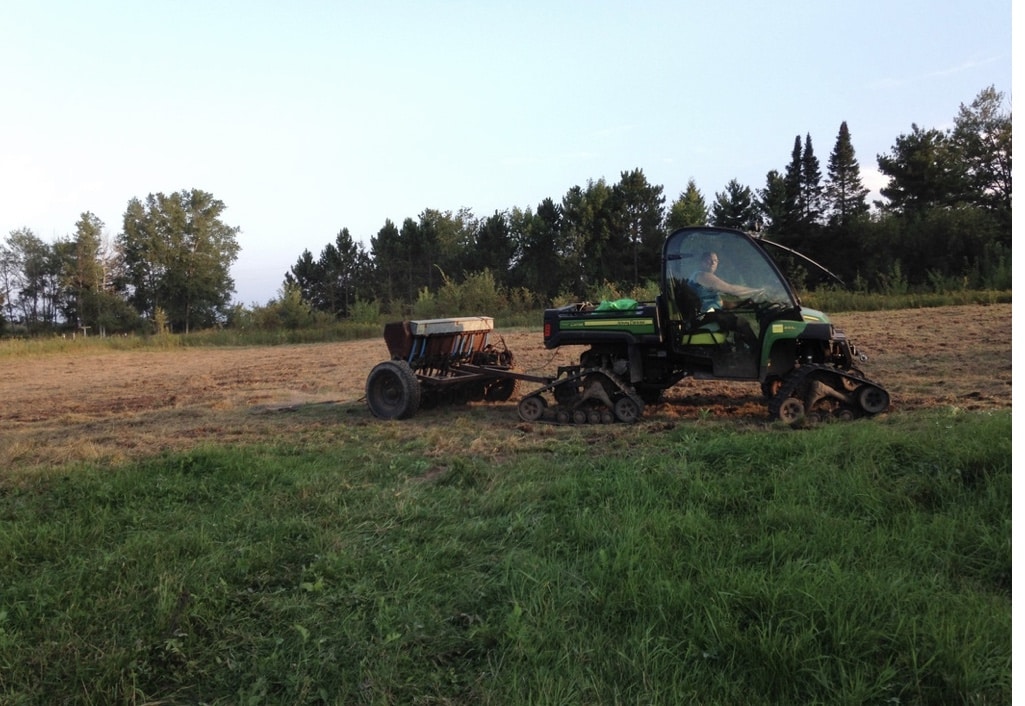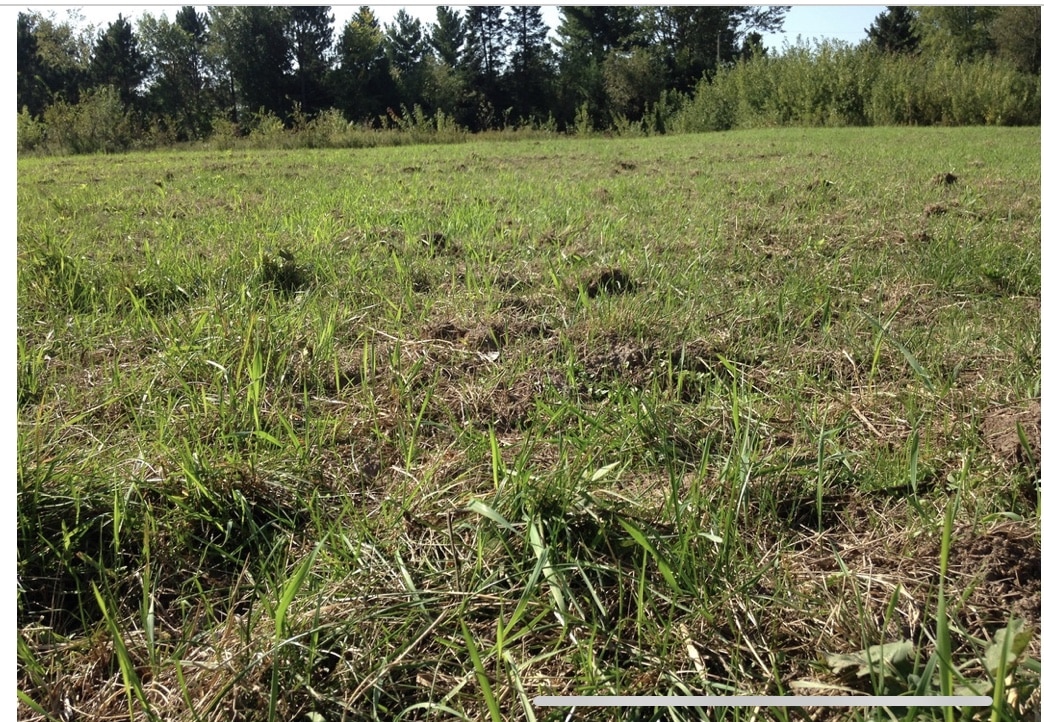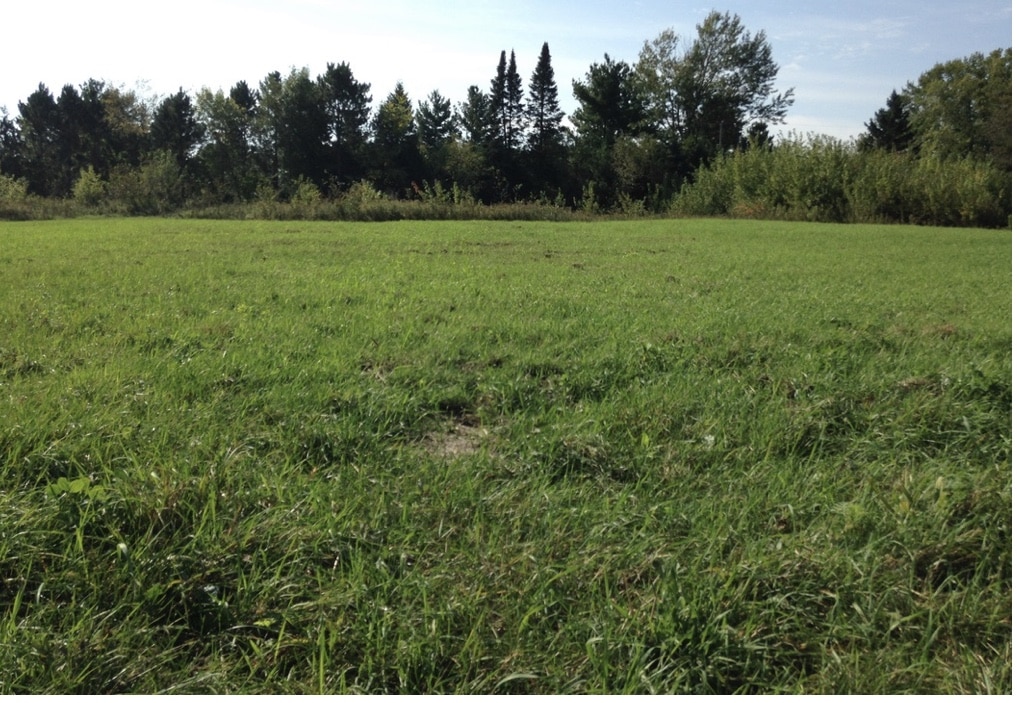When we purchased the farm four years ago, it hadn’t been in operation for quite some time. Since then we’ve done a lot of work around the farmhouse, on the pole sheds/barns and put up new pasture fence. The fields appeared to have been in some sort of CRP or set aside program at one time and then later let nature take its own course.

We contemplated tilling everything under and starting over from scratch. But, our grazing specialist at the time brought up the idea of letting the goats do the first round of pasture renovation since their diet includes browse/brush. Since last fall we’ve started grazing and the goats have been doing a great job of cleaning up the pasture. We also make our own hay on the same ground. It has been really fun to watch the diversity of the pasture grasses change with each rotation of goats and cutting of hay. Even with those improvements, portions of the pasture were so bumpy it was almost impossible to cut hay without breaking equipment or going incredibly slow. So, we decided it was time for our second round of pasture renovations.
For part two, we did a modified version of interseeding to smooth out the ground (no bumps) and out of practicality since we have limited tilling and planting equipment. Selected areas of the pasture were lightly disced and then planted using our small grain drill and drag as described in the GrassWorks Grazing Guide on page 8: http://grassworks.org/?300604/Guidebook.Pasture%20Density.pdf.

Throughout the last year I’ve been doing my homework on the type of plants I wanted to establish in the pasture. If I was going to make an investment in seed, it was important it was:
- A diverse mix of seed that would do well in warm and cool seasons in Wisconsin
- Compatible with our soil type (based on forage suitability lists from NRCS)
- Meet the needs of our livestock – goats

I ended up ordering three types of seed from Prairie Creek Seed:
- Diversemaster: Mix of grasses and legumes including tall fescue, meadow fescue, Italian ryegrass, orchardgrass, birdsfoot trefoil, red clover, Alaskan brome, perennial ryegrass, white clover, timothy, alfalfa and festuloium.
- Forage Feast: Chicory, which is forb. Goats eat more forbs than most livestock. It’s also supposed to naturally help reduce internal parasites.
- Tonic: Excellent source of Cooper and Selenium, micronutrients which goats usually don’t consume enough in their regular diet.
Now it’s a month later. We’ve had great growing conditions for fall with warm weather and rain. The new seeding is taking off great. I’m anxious to see how the goats like it come next grazing season and once it has had time to be established.

LEAVE A COMMENT
Comments